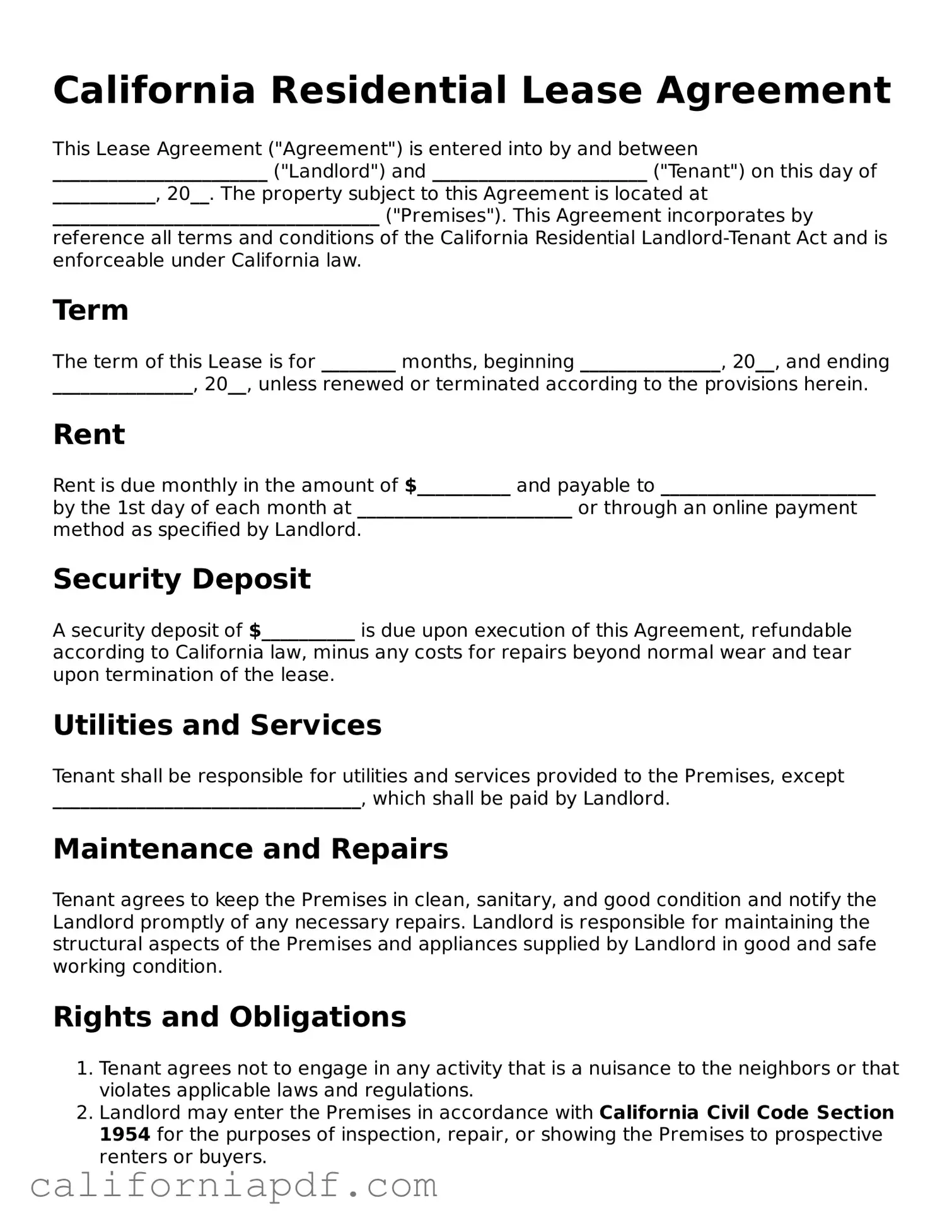California Residential Lease Agreement
This Lease Agreement ("Agreement") is entered into by and between _______________________ ("Landlord") and _______________________ ("Tenant") on this day of ___________, 20__. The property subject to this Agreement is located at ___________________________________ ("Premises"). This Agreement incorporates by reference all terms and conditions of the California Residential Landlord-Tenant Act and is enforceable under California law.
Term
The term of this Lease is for ________ months, beginning _______________, 20__, and ending _______________, 20__, unless renewed or terminated according to the provisions herein.
Rent
Rent is due monthly in the amount of $__________ and payable to _______________________ by the 1st day of each month at _______________________ or through an online payment method as specified by Landlord.
Security Deposit
A security deposit of $__________ is due upon execution of this Agreement, refundable according to California law, minus any costs for repairs beyond normal wear and tear upon termination of the lease.
Utilities and Services
Tenant shall be responsible for utilities and services provided to the Premises, except _________________________________, which shall be paid by Landlord.
Maintenance and Repairs
Tenant agrees to keep the Premises in clean, sanitary, and good condition and notify the Landlord promptly of any necessary repairs. Landlord is responsible for maintaining the structural aspects of the Premises and appliances supplied by Landlord in good and safe working condition.
Rights and Obligations
- Tenant agrees not to engage in any activity that is a nuisance to the neighbors or that violates applicable laws and regulations.
- Landlord may enter the Premises in accordance with California Civil Code Section 1954 for the purposes of inspection, repair, or showing the Premises to prospective renters or buyers.
- Tenant agrees to obtain Renter’s Insurance covering personal property loss or damage, personal liability, and relocation costs.
Termination and Renewal
This Agreement may be terminated by either party giving the other at least 30 days written notice. Upon termination, Tenant agrees to return the Premises in the same condition as received, minus normal wear and tear. The option to renew this Agreement is subject to negotiation between the Landlord and Tenant before this Agreement expires.
Signatures
IN WITNESS WHEREOF, the Parties have executed this Agreement on the date first written above.
Landlord's Signature: ______________________________________________
Tenant's Signature: _______________________________________________
